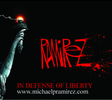|
|
|
Welcome to the official home and wonderful world of Pulitzer Prize Winning Political Cartoonist Michael P. Ramirez, daily editorial cartoonist for the Las Vegas Review Journal |
Democrat basket 04-21-19
Gift e-cards available now for prints and merchandise - CLICK HERE TO ORDER
|
Mueller report takeaways: Trump didn't collude but Obama blew it bigtime on Russia
Scott Jennings. USA TODAY Opinion•April 18, 2019 APRIL 21, 2019 BY SCOTT JOHNSON POWERLINE
NYT: NOT CRAZY, JUST TWO YEARS LATE We’ve been saying for the past two years or so that the Steele Dossier, on which so much of the Russia hoax was predicated, is Russian disinformation — if it is what it purports to be. You only have to read it and exercise your common sense to figure this out. This was an exercise, however, that would have belied the hysteria foisted on us by the Democratic Party and its media allies, perhaps preeminently the New York Times. The Times, incidentally, pioneered a new form of journalism in shoving the hoax down our throats over the past two years. In the new new journalism practiced by the Times, one reports stories based on secondary and tertiary sources whose identities must be protected based on the sensitivity of their information or the like. How sensitive can you get and still win a Pulitzer Prize? Scott Shane, Adam Goldman, Matthew Rosenberg are three such Times reporters. In the story with the incredibly anodyne headline “Mueller Report Likely to Renew Scrutiny of Steele Dossier,” Shane et al. throw shade on the Steele Dossier, describing it in the lead paragraph in terms that highlight its improbability: The 35-page dossier, spiced up with tales of prostitutes and spies, sketched out a hair-raising story more than two years ago. Russian intelligence had used bribery and blackmail to try to turn Donald J. Trump into a source and ally, it said, and the Kremlin was running some Trump campaign aides practically as agents. Practically! Taking a walk down memory lane, the Times trio draws on sources with secondary or tertiary knowledge of the subject: Interviews with people familiar with Mr. Steele’s work on the dossier and the F.B.I.’s scramble to vet its claims suggest that misgivings about its reliability arose not long after the document became public — and a preoccupation of Trump opponents — in early 2017. Mr. Steele has made clear to associates that he always considered the dossier to be raw intelligence — not established facts, but a starting point for further investigation. Now they tell us. Tell it to the FISA court, you tools. Just about every paragraph presents a howler in one way or another. For example: “How the dossier ended up loaded with dubious or exaggerated details remains uncertain, but the document may be the result of a high-stakes game of telephone, in which rumors and hearsay were passed from source to source.” Around about the ninth paragraph they give us this: “Another possibility — one that Mr. Steele has not ruled out — could be Russian disinformation.” Gee, that’s big of Mr. Steele. Are you sure he didn’t make it up? Don’t they teach you to put the highlight of your story at the top of the top? I could go on, but you get the idea. What a complete and utter farce. read more |

Click HERE to activate a free subscription of Hillsdale's Imprimis magazine for yourself or a friend.
|



